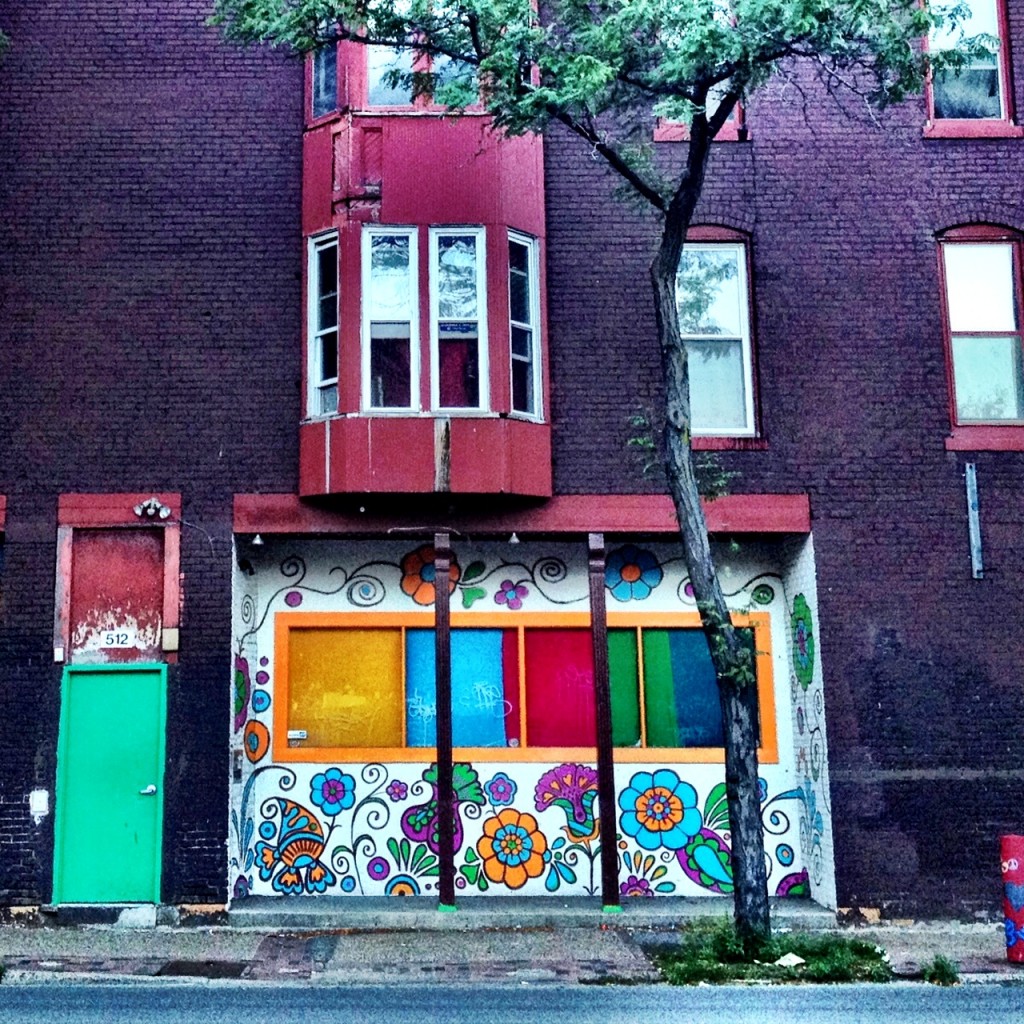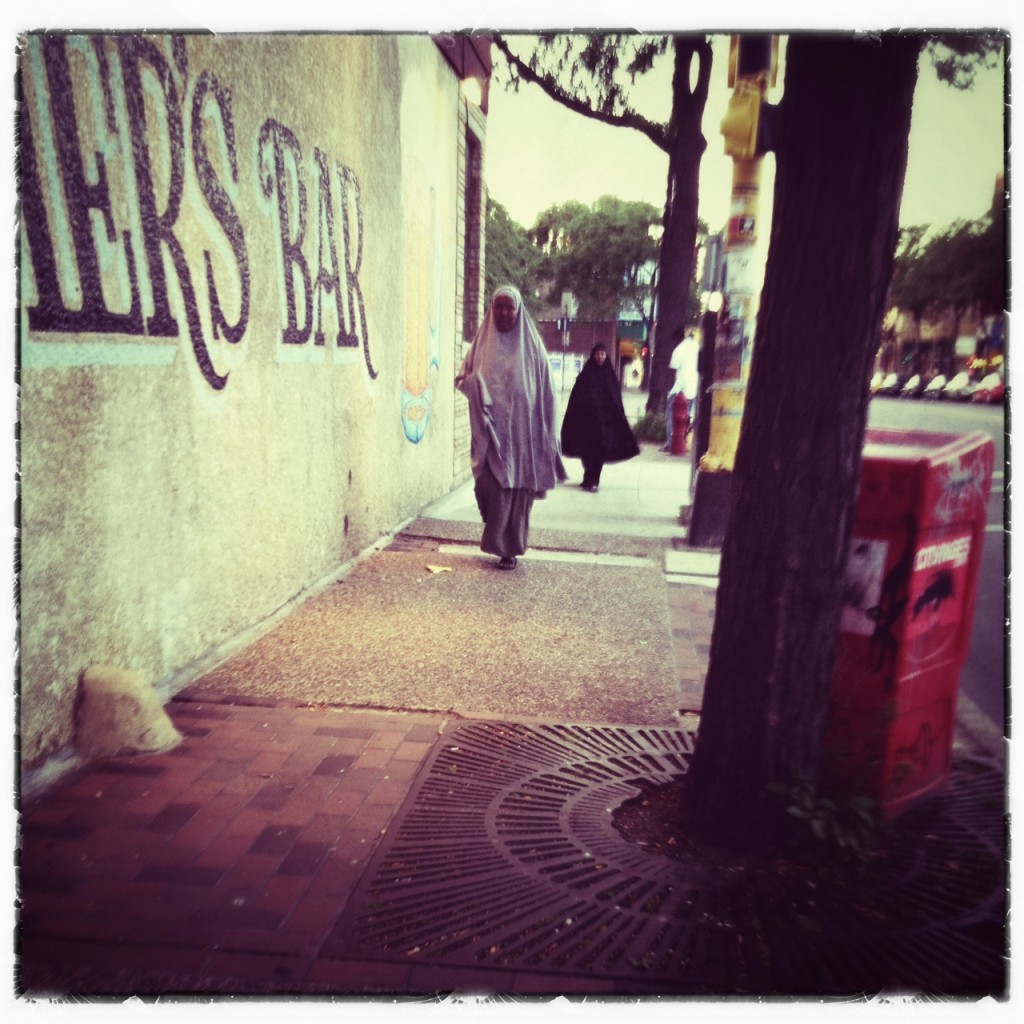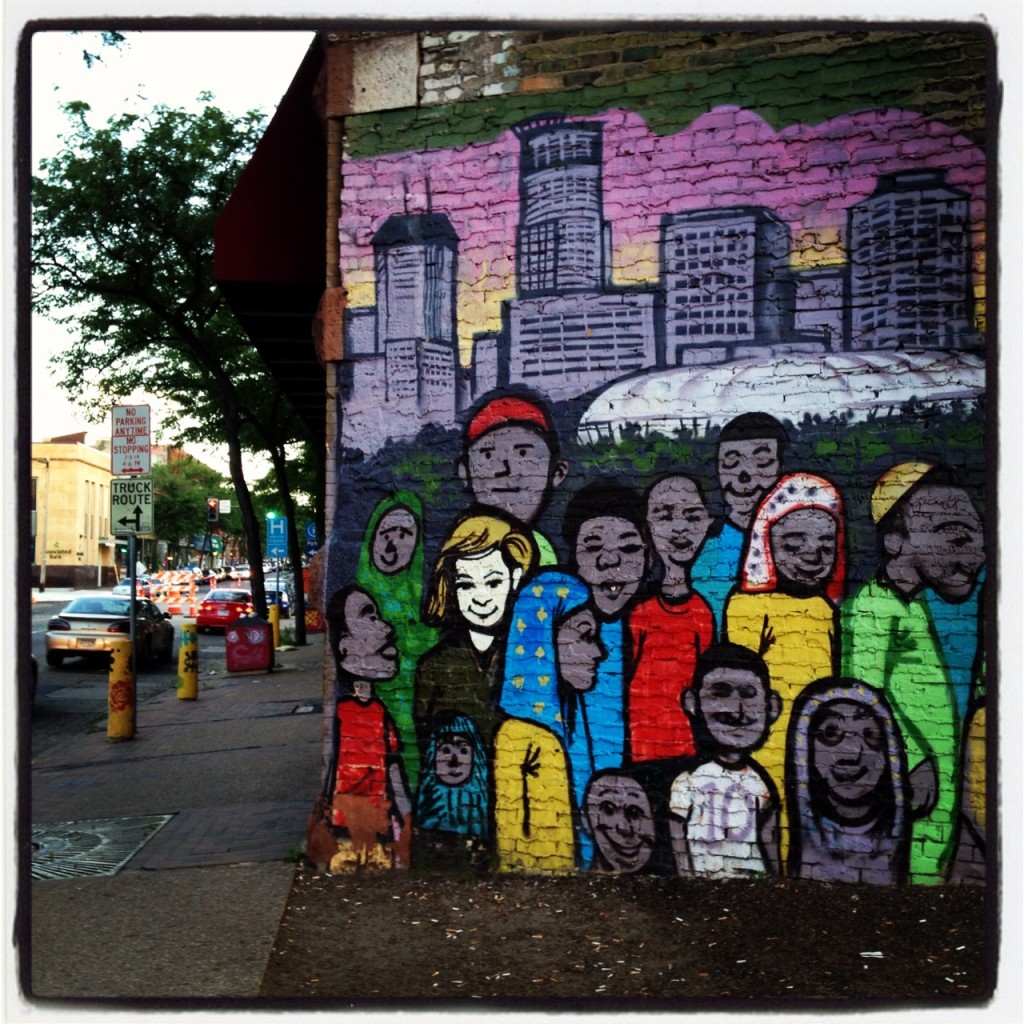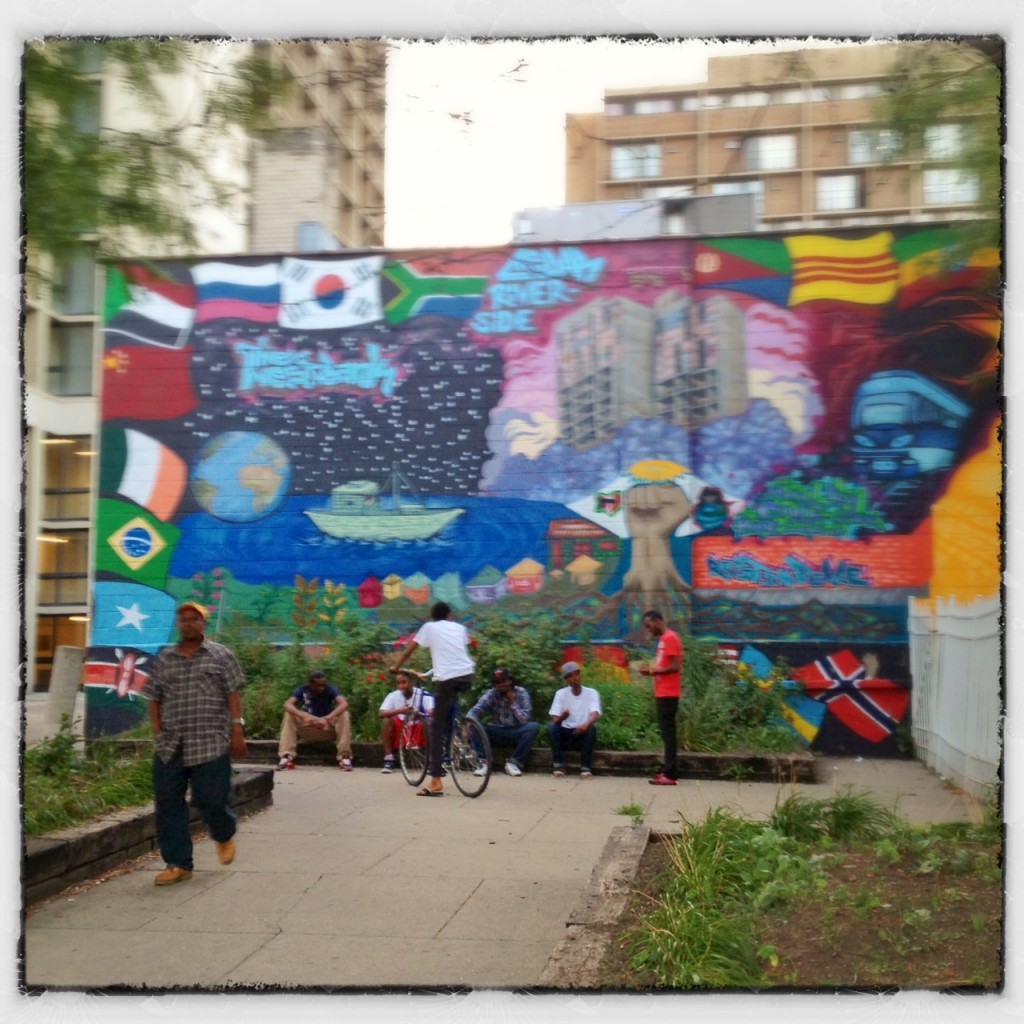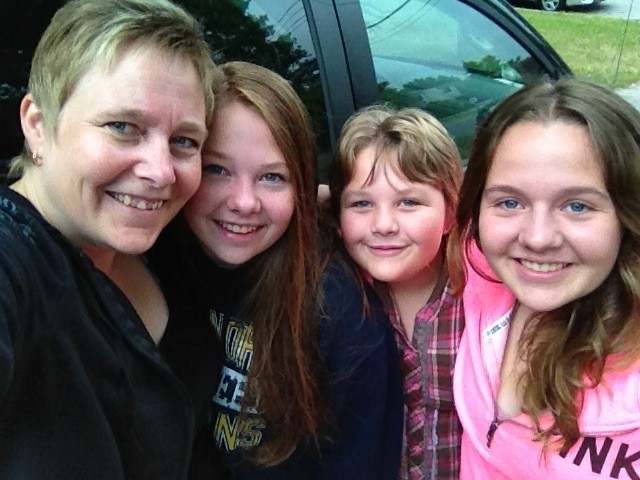 My daughters and I are home from vacation. We spent a few days camping in the woods (complete with our family’s traditional goofy conversations around the campfire that usually deteriorate into fart jokes), and then a few days doing more hedonistic things, like visiting the Mall of America and Valley Fair. (We try to satisfy everyone’s interests on our trips, and my teenage daughters are more inclined to shop than sleep in a tent in the woods.)
My daughters and I are home from vacation. We spent a few days camping in the woods (complete with our family’s traditional goofy conversations around the campfire that usually deteriorate into fart jokes), and then a few days doing more hedonistic things, like visiting the Mall of America and Valley Fair. (We try to satisfy everyone’s interests on our trips, and my teenage daughters are more inclined to shop than sleep in a tent in the woods.)
After a couple of days of consumerism and entertainment, I went for a walk near our hotel. First I found myself in a progressive independent bookstore in which a local social activism group was discussing which protests they should participate in. Then I wandered through a gritty, ethnic, low income neighbourhood, where my pale skin put me in the minority.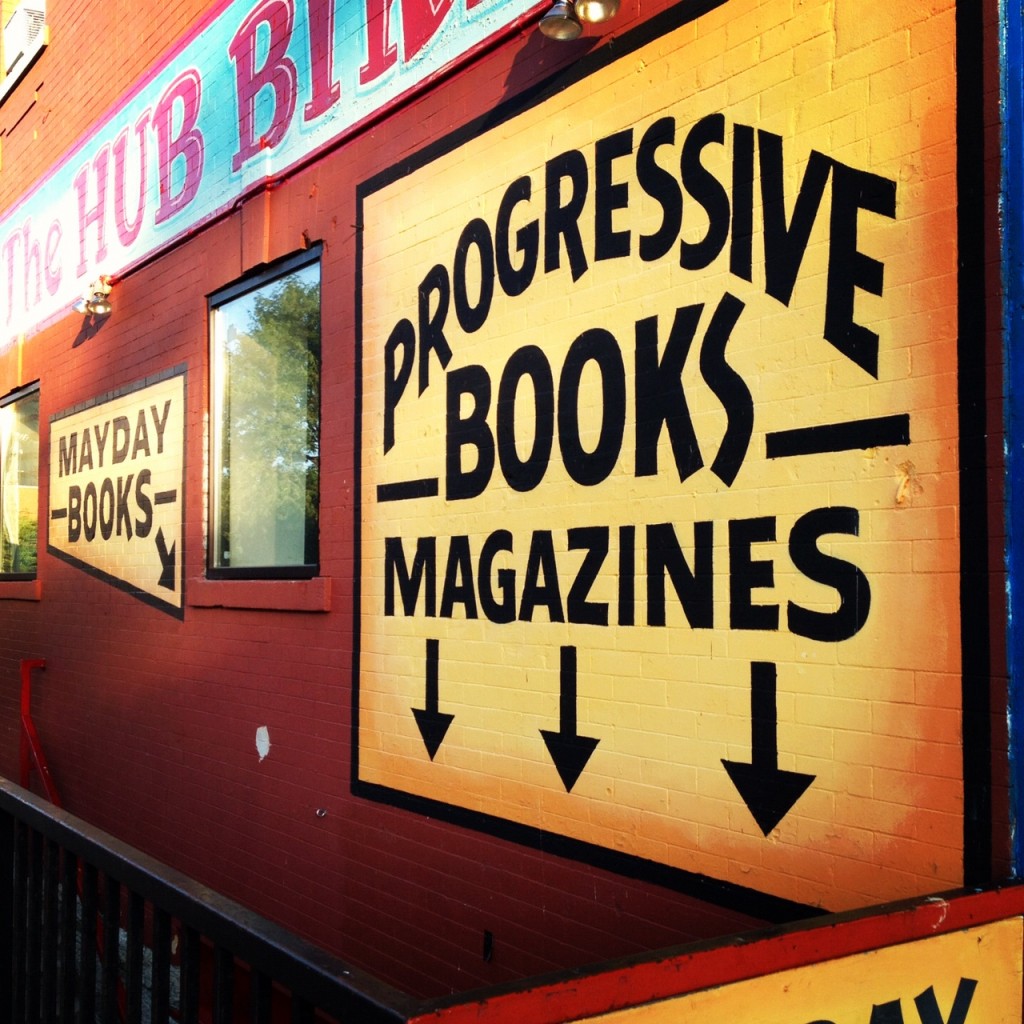
As I wandered, I found myself smiling. Though the shopping and amusement park had exhausted me, I found myself coming alive in this fascinating place where women in hijabs and men in long cloaks stood chatting in the streets. It reminded me once again how comfortable and energized I feel when I am in places where I don’t speak the local language or know the customs – places where it’s okay to be an edge-walker instead of a conformist.
This neighbourhood was as different from the mall or amusement park as it possibly could be. This neighbourhood showed its brokenness, its flaws, and its heartbreak. Most of all, though, it showed its heart.
Like my trip to Kensington Market a few months ago, I was reminded again how much better I fit in gritty, colourful, artful neighbourhoods than in places where shiny, happy people pretend that consumerism and entertainment will fill the empty spaces in their lives.
Our society likes shiny happy places. We like to gloss over the mess, fix the holes, and pretend the brokenness doesn’t exist. We pretend our relationships are fine, we put on happy faces in our social media interactions, we flock to “gurus” who will help us fix our lives in ten easy steps, we pretend grief can follow simple stages, and we seal ourselves off from relationships that get too messy.
But all of that shininess doesn’t make us come alive. It only makes us look like we’re alive. It’s like Weekend With Bernie – we’re already dead, but still propped up by lies that make us look like we’re having a great time at the party.
Real life is in the grit and the messiness. Real life is about embracing the shadow. It’s about diving into the depths of our grief instead of glossing over it. It’s about wrestling our way through difficult relationships to try to find the value under the layers of brokenness.
In a workshop I once did, I challenged the participants to consider what it meant to be authentic in their relationships. One woman struggled with the exercise I’d given them, and finally approached me about it. “I’m always authentic in my relationships,” she said. “If someone gets on my nerves, I just stop being in relationship with them.”
“That’s not exactly what I mean,” I said. “Stepping away from difficult situations is not what authenticity is about. Authenticity is about diving deeper into the brokenness and trying to find the oyster buried in the ugly clamshell. It’s about being real and living in such a way that others can be more real in our presence.”
Living authentically is not about fixing every flaw, abandoning every broken relationship, or following every self-improvement guru we can find to better ourselves. It’s also not about airing all of our dirty laundry in public.
Authenticity is about embracing the grit, celebrating the mess, living with discomfort now and then, stretching beyond our comfort zones, asking real questions, honouring our brokenness, and holding our place in community despite the difficulty it may bring.

